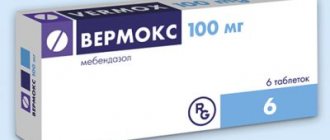Rules for taking medications: what is a medicinal dose and what is it like?
A dose is the amount of medicine that is taken at one time. It may be expressed as the weight of the tablet (eg 250 mg), volume of solution (eg 10 ml), or number of drops or sprays (eg 2 drops, 1 spray).
Choosing the optimal dose in each specific case is an important condition for the effective and safest use of the prescribed drug. The strength of its effect may depend on the amount of medication taken at a time. If the dose is increased without authorization, side effects may occur.
Before using any drug, you need to know how much of it can help you and how much can cause irreparable damage to your health, so carefully study the specific dosages of the medications you buy.
The dose of medication prescribed to treat a disease is called therapeutic. Pharmacists distinguish three types of it:
- Minimum (threshold). It gives a small pharmacological effect, 2-3 times lower than the average dose.
- Average . Causes a moderate pharmacological effect. It is most often used in clinical practice.
- Maximum . It has the most effective therapeutic effect. For example, in case of barbiturate poisoning, the maximum dose of analeptics (medicines that have a strong stimulating effect on the respiratory and vasomotor centers) is prescribed. It is also divided into the maximum single and maximum daily dose.
In toxicology, the science that studies dangerous substances and their effects on humans, there is the concept of “ maximum permissible dose ”, each drug has its own. If you increase the “maximum permissible dose”, it can become toxic to the body and cause side effects.
A toxic dose is the amount of a drug taken by a person that leads to toxic manifestations (impairment of the physiological functions of the body).
The range between the minimum therapeutic dose and the minimum toxic dose is called the breadth of therapeutic action . The higher it is, the safer the drug is and the doctor can select an individual effective and safe dose of the drug for the patient.
In medical practice, there is also such a term as “lethal dose”, after taking which death occurs. Therefore, before taking any medicine, it is best to consult with your doctor and strictly follow his recommendations, as well as carefully read the instructions.
The optimal dosage is considered the safest . This is the dosage at which the desired effect is achieved and side effects are minimal. It should be taken at intervals determined by your doctor. In pharmacology, this is usually called a dosage regimen.
The dosage regimen is the frequency with which you need to take medications, that is, the number of medications taken per day. The total daily dose is calculated based on the dose and the number of times it is taken per day. All instructions indicate how to take the medicine before or after meals, and how many times to do it. For each age and physiological state, the dosage is individual.
After we have talked about the features of dosages, we will explain in what dosage forms they are produced and what methods of administration are available.
Dosage for children
In pediatrics, special attention is paid to choosing medications and determining the required dose. It must be chosen especially correctly in order to achieve the desired result and at the same time not harm the body that has not yet formed. Many medications are prohibited for use in children due to a lack of information regarding pharmacokinetics and safety.
As already mentioned, the amount of medication is determined taking into account the child’s body weight or age.
If a child is overweight or underweight, there may be an overdose or use of the medicine in minimal quantities.
You need to be especially careful when determining the dose in the first months of a child’s life. The period of fetal development from 28 weeks until the day of its birth until the 7th day of its life is called the perinatal period. During this time, the impact of medications is very high.
Adults should not try to determine the dose for their baby on their own to avoid sad consequences. A pediatrician can best handle this task.
How to take medications: dosage forms and routes of administration
A dosage form is the physical form of a dose of a drug. Medicines can be in the form of tablets, capsules, syrups, solutions, suspensions, aerosols, patches, ointments, etc.
Each dosage form is also divided into several types, such as extended-release tablets, lozenges, and buccal tablets. Different dosage forms may have different dosages (for example, 500 mg capsule, 5 ml suspension)
The route of administration is the method of introducing a drug into the human body. There are two types of routes of administration: enteral and parenteral.
The enteral route means the absorption of the active substances of the drugs through the mucous membrane of the gastrointestinal tract. It can be of the following types:
- oral (through the mouth);
- sublingual (under the tongue);
- rectal (through the anus).
The parenteral route refers to the administration of drugs directly into the blood without involving the gastrointestinal tract. Basically, with the parenteral method, injections are introduced into the human body, which are of the following types:
- intravenous (into a vein);
- intramuscular (usually injected into the area of the buttocks, abdomen or forearm);
- subcutaneous (in the outer surface of the shoulder or in the subscapular region);
- infusion (intravenous infusions using a dropper).
In addition, there are also nasal, ear and eye drops that need to be dripped into the eyeball, auricle and nasal cavity, respectively. There is also a separate group of drugs for vaginal administration.
To know exactly how to take pills and other medications, you should carefully read the instructions before taking them.
How to take pills correctly?
A tablet (from the Latin tabella - tablet, plate) is a solid dosage form obtained by pressing powders and granules containing one or more active medicinal substances.
The basic rule for taking any tablets, capsules, dragees is the frequency of their use. If the drug is prescribed once a day, then you need to take the medicine at the same time, and not at any time during the day. Typically, this is the dosage regimen for modified-release drugs. That is, the drug does not immediately enter the blood, but a gradual, uniform absorption of the active substance occurs.
If the tablets need to be taken twice a day, then the interval between doses should be 12 hours (for example, taken at 8 a.m. in the morning and at 8 p.m. in the evening).
If the dose is taken three times, then the interval between doses is reduced to 8 hours (for example, at 6.00, at 14.00 and at 20.00).
It is extremely important to distribute the tablets evenly. Fluctuations in the interval between doses of the drug of 1-2 hours are allowed. Chaotic use of the drug should be excluded.
If taking pills depends on food intake, this is very important to observe. Drugs that require taking “before meals” are less well absorbed or are destroyed altogether if food components and gastric juice produced during digestion interfere with them in the stomach. If the instructions indicate that the pill should be taken “after meals,” then this should also not be neglected. Some medications should not be taken on an empty stomach or stomach because they destroy or damage the stomach lining. The easiest way is to take tablets “with meals” and “regardless of meals”. Everything is clear here.
Film-coated tablets cannot be divided. It is this shell that preserves the active substance of the tablet from the aggressive environment of the stomach. If it is violated, the effect of taking it may be zero. Only those drugs that have a dividing strip (risk) can be divided. The tablet can only be divided strictly according to it, so the manufacturer guarantees that the active substance is distributed evenly in each part of the tablet. Arbitrary division no longer guarantees this. The capsules should be drunk whole, not chewed, and the same goes for the pills. Exceptions are children, who are often prescribed to open a capsule or tablet and dissolve the active substance with water, and then give it to the baby. The digestive system of children is not perfect and cannot neutralize the effect of the medicine, so such techniques are acceptable for children.
Following these simple rules will speed up the healing process. Be healthy!
Dosing features for different cases
The same dose may not be effective for people of different ages and physiological conditions, therefore, the instructions for the drugs indicate the specific dosage of the drug for different patients. In some conditions, for example, during pregnancy or kidney failure, it is best to avoid using a certain list of drugs.
Before prescribing doses of a drug for different patients, many factors are taken into account , including:
- age;
- gender;
- weight;
- existing diseases;
- condition of the liver and kidneys;
- individual sensitivity to the components of the drug;
- During pregnancy and breastfeeding;
- metabolic rate;
- state of the gastrointestinal tract;
- whether the patient is taking other medications.
Particular attention should be paid to the compatibility of drugs. For example, taking several medications from the NSAID group (non-steroidal anti-inflammatory drugs) is not recommended, as this increases the risk of side effects. It is best to consult your doctor before taking multiple medications.
In order not to harm your health, do not increase the dosage of medications prescribed to you and take them exactly as prescribed by your doctor.
In the next paragraph, we will consider the difference between children's dosages and adults and talk about how to calculate them.
MEDICINES FOR CHILDREN: DOSAGES AND TERMS
Parents often ask the question: “How to calculate the child dose?” It would seem that it is superfluous: after all, the dosage is determined by the doctor, and all the details are given in the instructions for the drug. But when it comes to health, it’s better to check everything several times. And it will be bad if mom or dad, grandmother or grandfather give the child an extra tablet “to enhance the effect.” In order not to cause harm, you need to know the basic principles of the action of drugs, dosing principles and some terms.
The effect of various drugs on the body directly depends on the concentration of the active substance in the desired organ or tissue. However, there is a significant difference between the dose administered and the dose delivered directly to the cell. The reaction to a drug in children depends on such a large number of factors that it is a priori unpredictable.
Children's doses for different ages are determined in clinical trials - which is why it is necessary to strictly adhere to the dosages prescribed by the pediatrician.
What do parents need to know? First of all, that there are two main doses, and this is true for any medicine, including over-the-counter ones. The maximum one-time drink is how much you can drink at one time. Maximum daily dose - the total amount of medication per day. Below the minimum dose, the medicine will not have a therapeutic effect, and using a dose exceeding the maximum therapeutic dose may cause too strong a toxic effect on the body. "Country of Childhood" recommends that you always carefully read the instructions for the drug - every box purchased at the pharmacy is supplied with it.
MANY THINK THAT IT IS ENOUGH TO DIVIDE THE TABLET IN HALF AND THE REQUIRED DOSAGE WILL BE COMPLIED. HOWEVER, IT CAN BE BREAKED ONLY IF THERE IS A SPECIAL GROOVE . IN OTHER CASES, SPECIAL MEDICINES WITH MULTIPLE DOSES ARE REQUIRED - IT IS NOT ALWAYS WHEN MANUFACTURING A TABLET IT IS POSSIBLE TO MAKE A HALF CONTAIN EXACTLY 50% OF THE CONTENT. ALSO NEVER REPLACE “CHILD” DOSE WITH HALF OR QUARTER “ADULT” DOSE. THIS IS RISK OF OVERDOSE, ESPECIALLY IN SMALL CHILDREN.
The dose is most often indicated in grams or fractions of a gram. For children, the dose is usually prescribed in two ways - by age (for example, up to 2 months, up to a year, etc.), and by weight - the amount of the drug per 1 kg of body weight in mg/kg, mcg/kg.
Those. in the first case, it should be remembered that in children with overweight or underweight, there may be a shortage or excess of the dosage noted in the drug instructions. In these cases, you should stop taking it and contact your pediatrician for adjustments.
Forms of children's medications are often in the form of suppositories or syrups (or as granules or powder for suspension). For liquid dosage forms, the dosage is often indicated per teaspoon. Many people have a standard idea of the capacity of a teaspoon - 5 ml, but not all teaspoons are the same. In addition, not everyone fills an ordinary spoon exactly to the brim.
Thus, scientists from Cornell University found that when using medium-sized spoons, patients received 8.4% less medicine, and when measuring the medicine with large spoons, they received 11.6% more. Hence, another piece of advice: use cutlery only if the medicine does not come with a special measuring container - a cap or spoon.
As for medicinal plants and herbs, it is especially difficult to decide on a child’s dose, because The packaging usually indicates the ratios for adults. For the convenience of calculating dosages for children, we provide a table - but remember that it is suitable specifically for herbal medicine.








